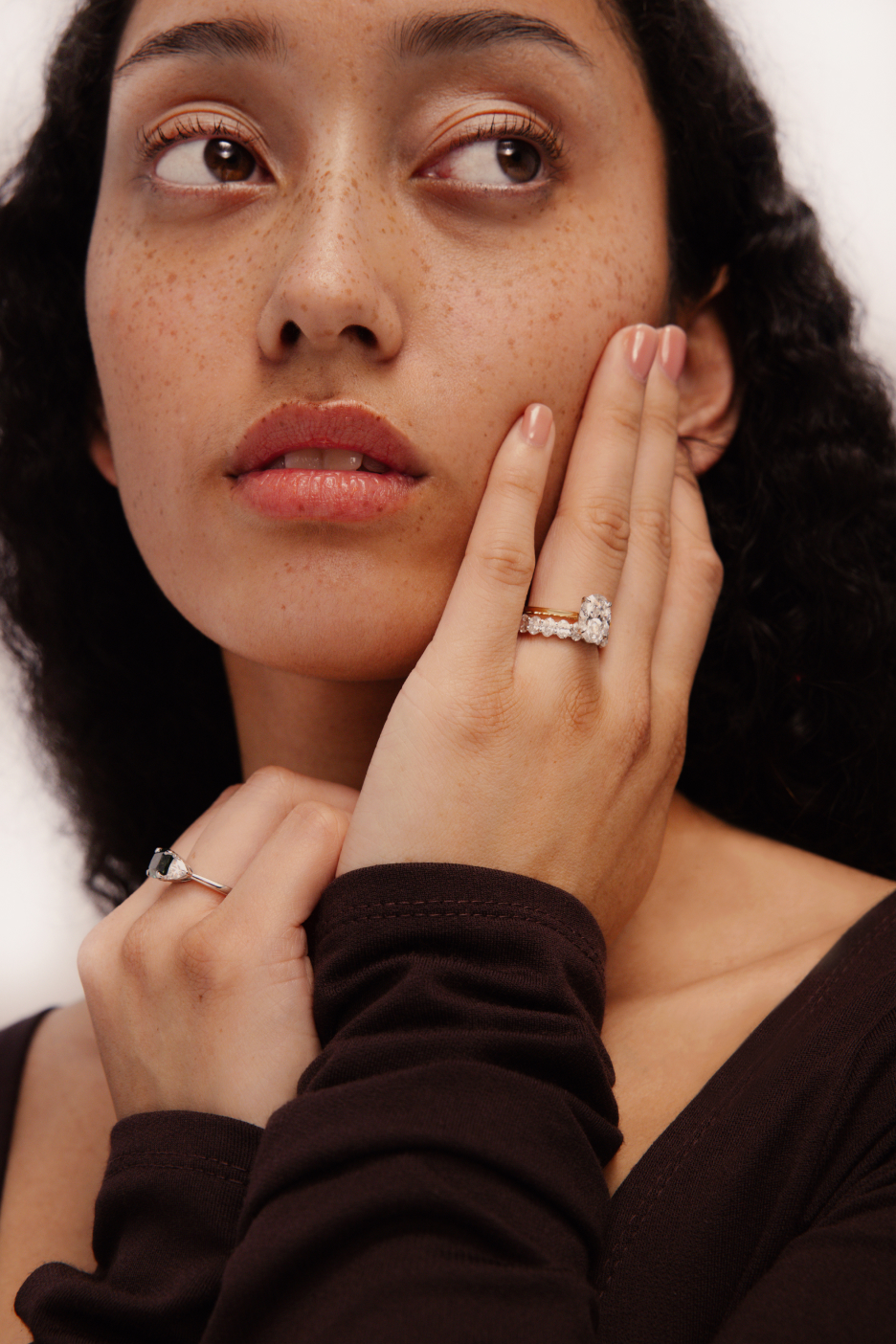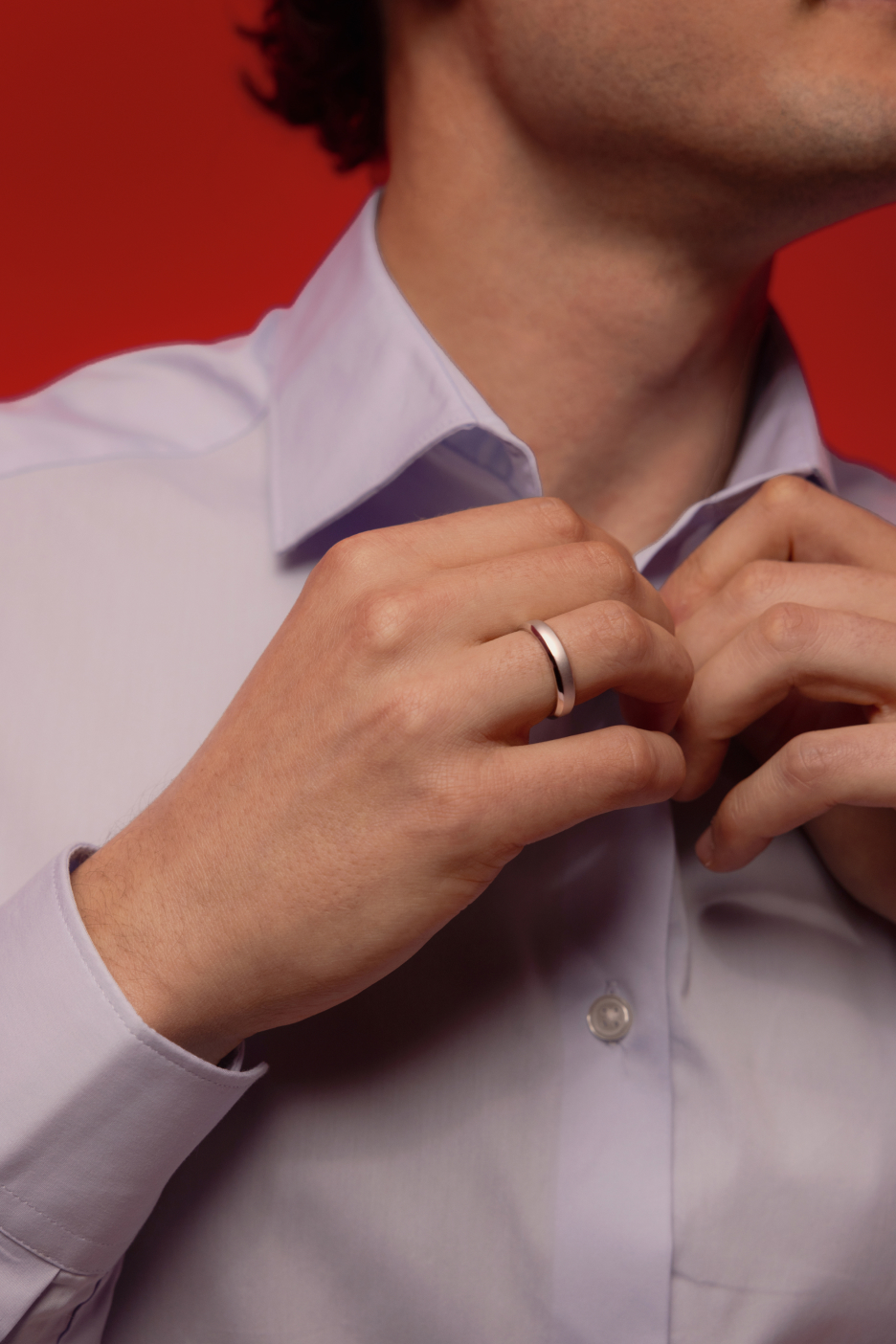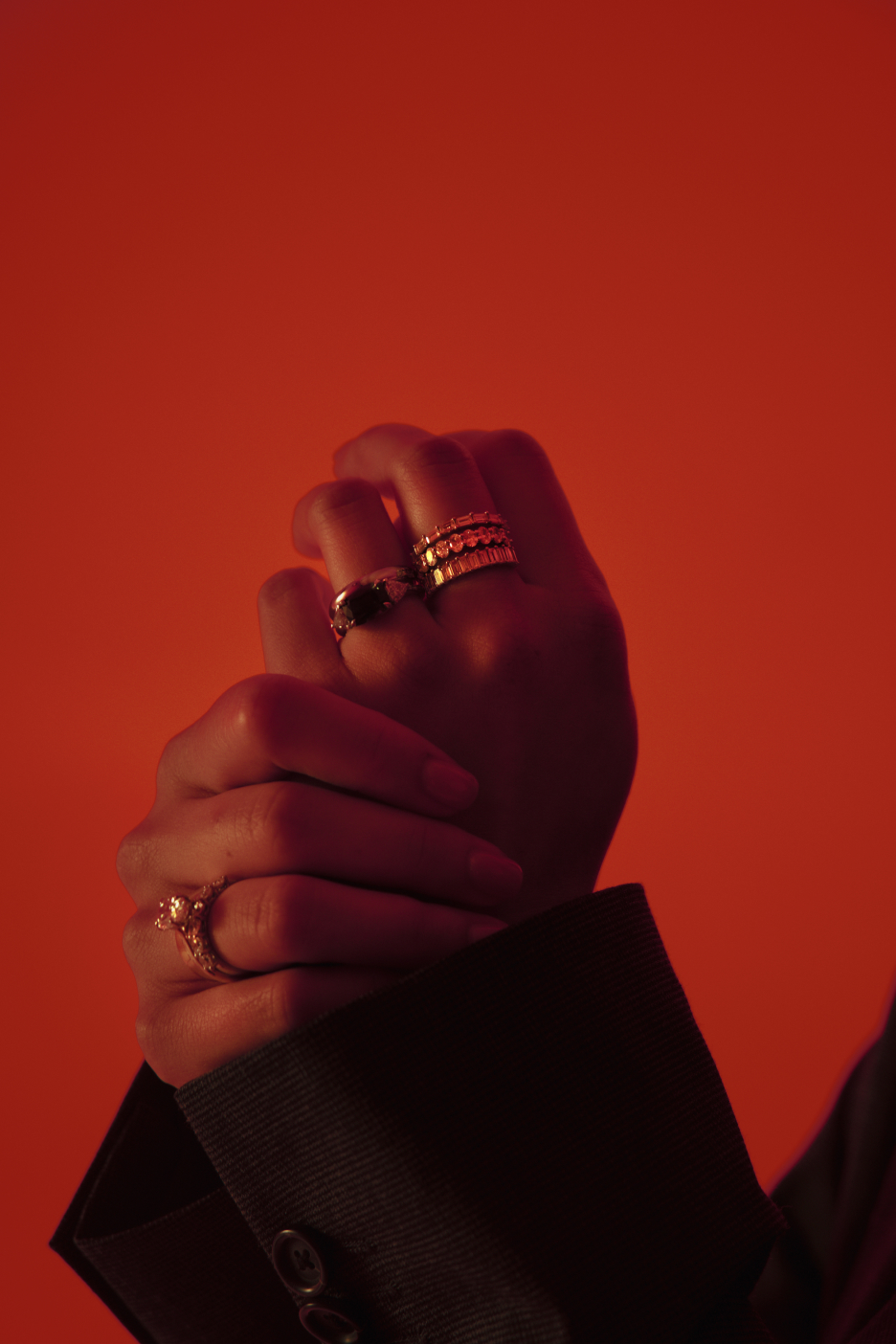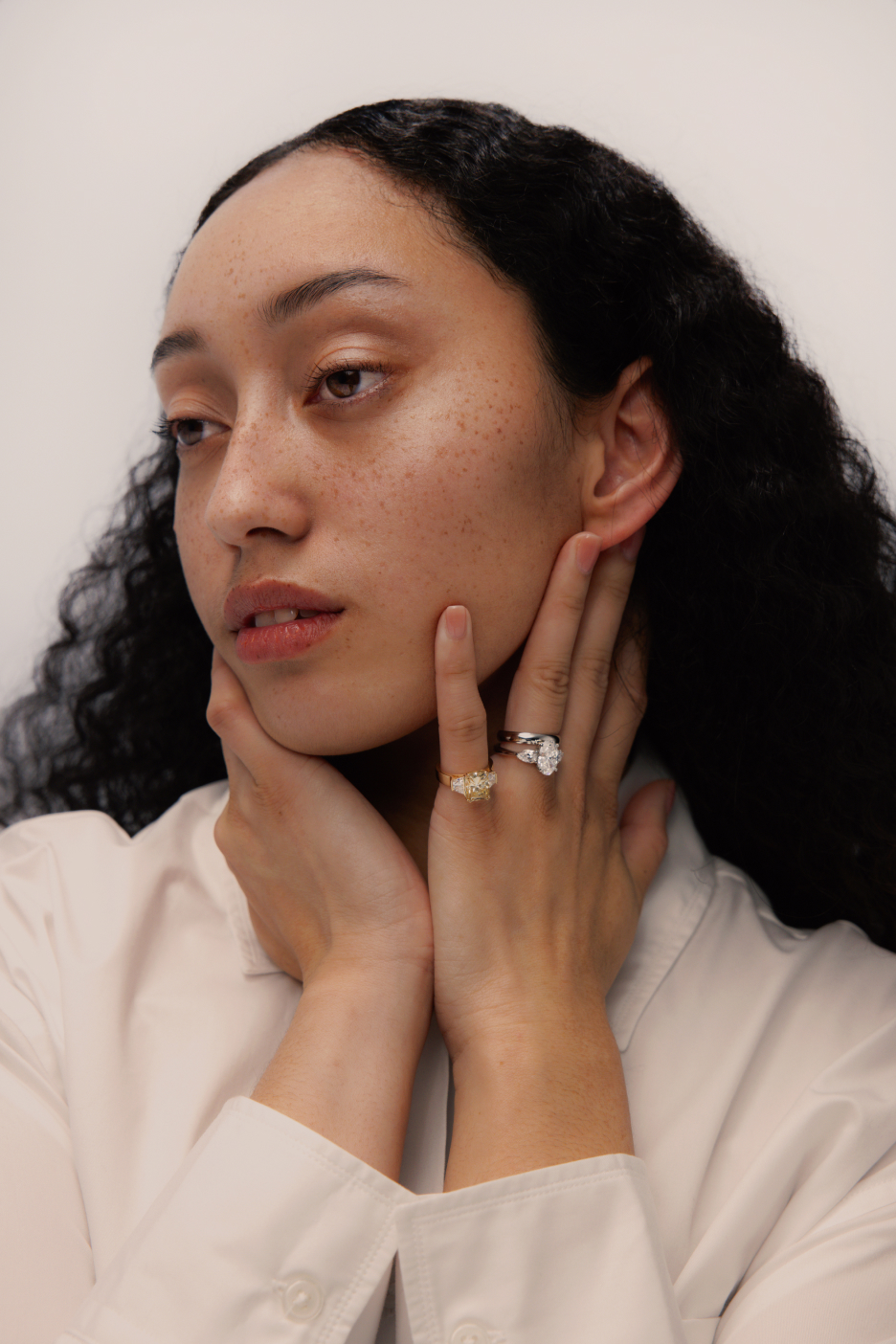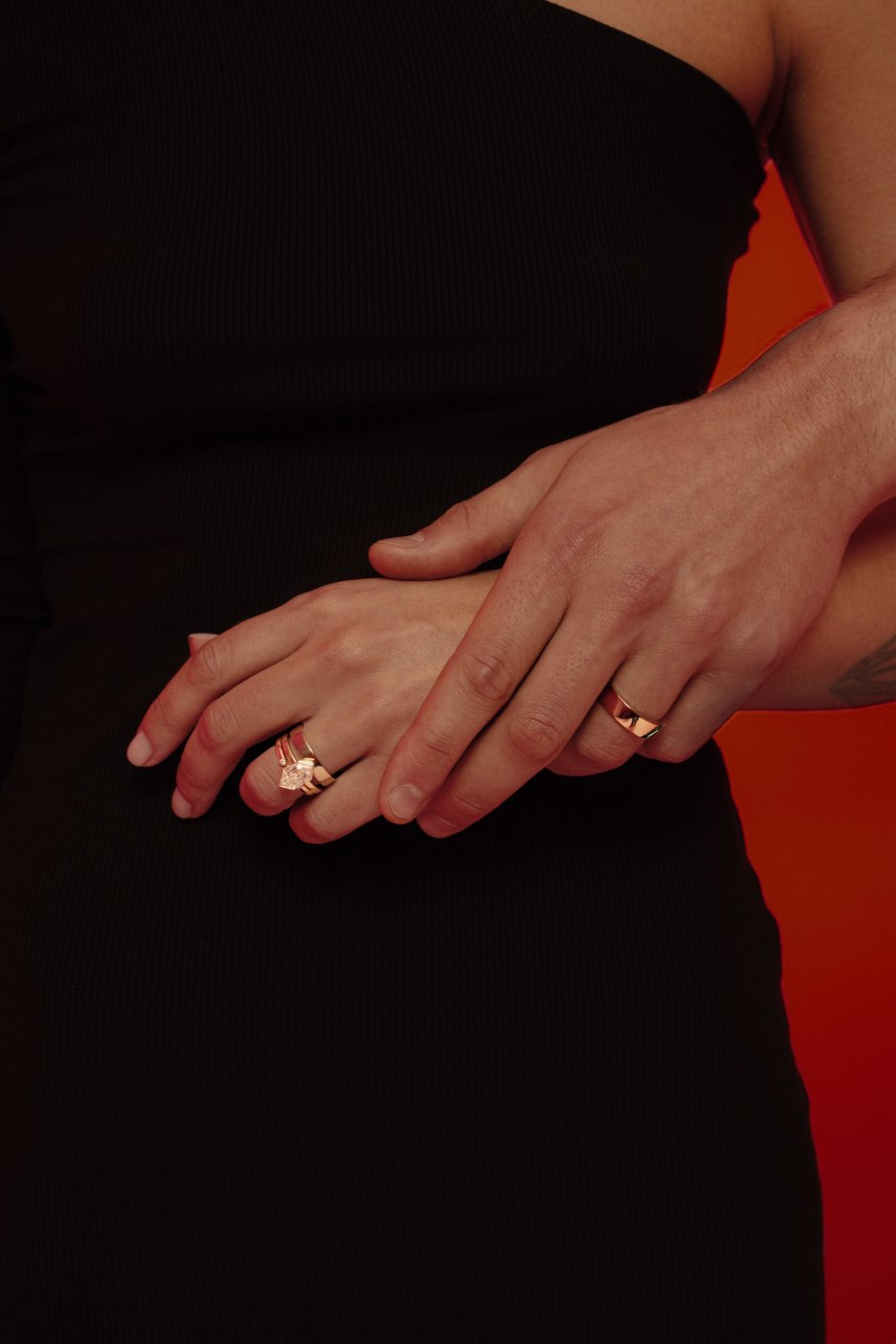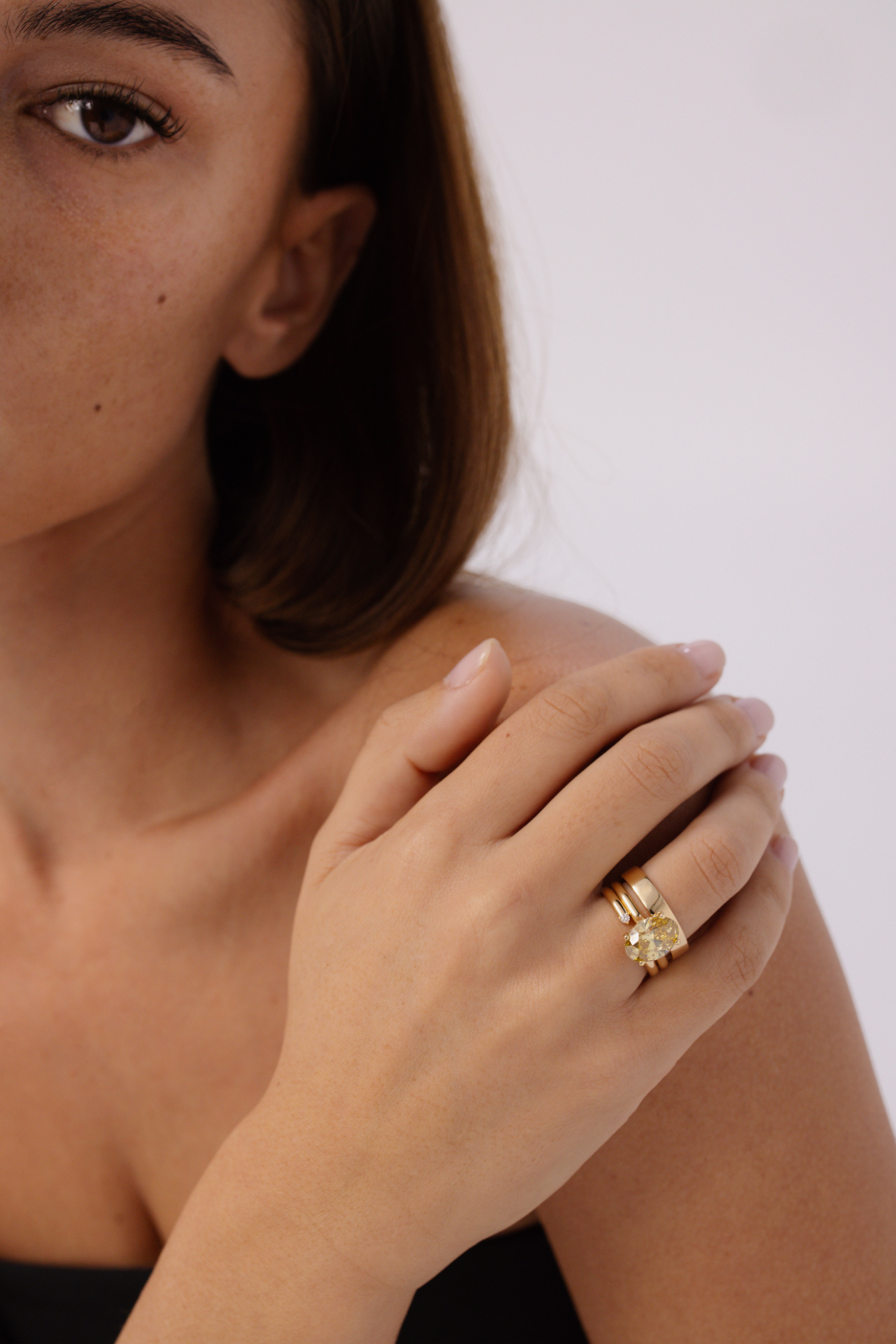Moissanites vs. Lab Grown Diamond: What's the Difference?

You've told your beloved, "I love you to the moon and back." But what if you could actually prove it?
Moissanites are an incredibly rare gemstone, first discovered in a crater. It provided scientists with the first clues that suggested that gemstones could come from space. In their natural form, moissanites are from the stars; and they are as inspiring as they are beautiful. They also make for a truly stellar diamond alternative.
Have you wondered about the differences between moissanite vs lab grown diamond rings? If you are in the market for an ethical, conflict-free stone, a moissanite is a romantic option worth considering. And because naturally occurring moissanite is so rare, it is often lab grown, too (clean and clear supply chain without any questions around conflict and environmental impact).
Whether you end up buying moissanite or buying a lab grown diamond, you'll be putting sustainability at the forefront of your choice. Still curious about the subtle differences between the two? Keep reading to discover the differences, and then learn how Four Words can help you design the ethical ring of your dreams!
What Is Moissanite?
In 1893, French scientist Henri Moissan stood over a crater and watched as it sparkled brilliantly in the light. The entire crater was full of sparkling studs left behind when a meteorite made impact with the ground. The space rock had left behind a stunning gemstone made of silicon carbide that no one had ever seen before.
To the naked eye, the studs embedded in the crater looked like diamonds. Without the ability to analyze the stones, the scientists themselves may not have known the difference. Rather than waiting around for another meteorite to hit the earth, they got to work learning how they might synthesize the new gemstone.
The name moissanite comes from Henri Moissan, who first stood above the crater. Today, most moissanites are grown under laboratory conditions. There is no mining or conflict involved in the production of these gemstones, which makes them an appealing option for anyone seeking a kinder diamond alternative.
Comparing Diamonds and a Moissanite
Although diamonds and moissanite stones look similar, they do have subtle differences that might help make your decision easier. By going through the differences facet by facet, you can easily decide which stone is the right centrepiece for your perfect engagement ring.
Appearance
Although moissanite and lab grown diamonds are similar, they do have noticeable differences in their overall brilliance. This is due to the atomic structure of each gemstone. For example, just like mined diamonds, even lab grown stones contain impurities, so they develop facets the same way they would under natural geological conditions.
A moissanite is atomically different to a diamond. Instead of it being compressed carbon, moissanite is a combination of carbon and silicon. At an atomic level, moissanite is called silicon carbide. The silicon atom gives moissanite the extra sparkle and a rainbow-like appearance in the right light.
Lab grown diamonds are also brilliant but offer a less colourful sparkle. Their look tends to be "cleaner" because diamonds have fewer facets. If you are more familiar with the appearance of diamonds, you may be able to tell the difference between the two with a bit of concentration.
Colour
Moissanites have a more colourful sparkle, and they also have a more colourful outward appearance. Even when a moissanite and lab grown diamonds receive a"colourless" grade moissanites tends to have earthy undertones. In comparison, lab grown diamonds tend to be perfectly clear.
This has to do with the chemical makeup of both stones. They contain distinct elements that change the outward appearance in subtle ways. While many diamonds will receive the grade "colourless," moissanite is often considered "near-colourless."
Durability
Everyone knows that diamonds are one of the hardest substances on earth, and lab grown diamonds are exactly the same. Even so, moissanites are not far behind!
When discussing durability, we use a system called Mohs Scale of Hardness. This describes how well a material can withstand scratching. The highest score is ten, using a diamond as a baseline.
The average moissanite stone scores around 9.5 on this scale. This makes it incredibly durable. A high score suggests that the stone can withstand a lot of rough-and-tumbles, and can hold up to daily wear.
Both stones are strong enough to make an ideal centrepiece for an engagement ring.
Sustainability
Because scientists create both moissanite and lab grown diamonds in laboratory settings, they are both equally sustainable and ethical. The carbon footprint produced in clean, high-tech laboratories is seven times less than mined diamonds. If you choose a lab grown stone from Four Words, we can also ensure that our stones are climate positive.
There are no ethical concerns involved with the process of growing stones in the laboratory setting. The gemstone you receive will be atomically identical to a stone mined from the earth. The only difference is less violence toward humans and the planet.
Moissanite vs lab grown Diamond: Two Ethical Options
When all is said and done, comparing moissanite vs lab grown diamond rings comes down to a matter of personal preference. Both stones are sustainable, conflict-free, and kinder than blood-mined alternatives. Not only will these stones send a message about your love, but they'll also send a message about your intentions to walk softly on the Earth that we share.
If you're ready to select a stone that speaks to you, Four Words is ready to help. We offer a unique concierge service that will walk you through creating a bespoke engagement ring like no other. Reach out today to begin the process that's sure to be the start of the best days of your life!
